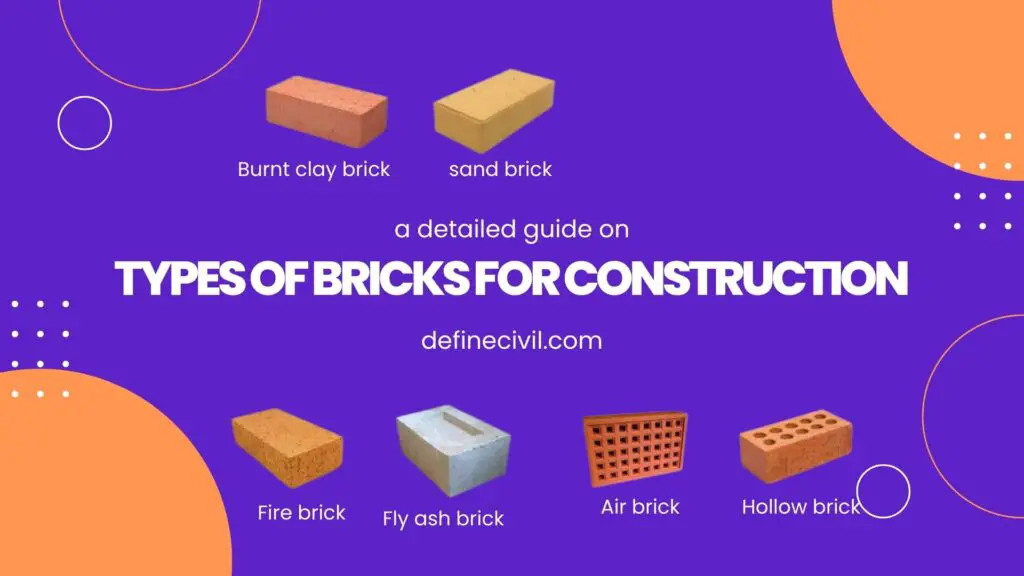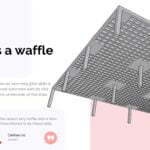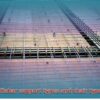The type of bricks used in a construction project makes all the difference. A certain type of brick is particularly well-suited to a certain type of project if properties of bricks align with the requirements of the project. Therefore, one must educate oneself about these 7 major and common types of bricks before starting a new project.
Bricks are incumbent to all types of construction works; whether it is house construction, commercial, industrial, or any kind of construction project. There is a whole gamut of benefits associated with this versatile construction material.
Bricks offer durability, acoustic and thermal insulation, energy efficiency, sustainability, and weather efficiency. Brick masonry does not require skilled labor, since the shape and size of masonry units is uniform. Bricks are also lightweight (lower dead loads), easy to handle, and easy to transport. Economically, bricks are better than stone and concrete blocks.
So, our today’s post is about the different types of bricks commonly used in construction projects and one must know.
Types of Bricks
Based on Quality of bricks
- First Class Brick
- Second Class Brick
- Third Class Brick
Types based on Manufacturing Method
- Extruded Brick
- Molded Brick
- Dry pressed Brick
Types of bricks Based on raw material used
- Firebrick
- Sand-lime Brick
- Concrete Brick
- Fly ash clay Brick
- Burnt Clay Brick
Based on Using Location
- Facing Brick
- Backing Brick
Also Read: Types of Brick finishes- Brick Wall Texture
Burnt Clay Bricks
When you casually talk about bricks it is the burnt clay brick you are talking about. This is the most common type of brick used in construction sector.
Burnt clay bricks are used in load bearing walls, partition walls, masonry columns, wall foundations, boundary walls, parapet walls, and more, with a wide variety of purposes.
Bricks are joined together with mortar (mixture of cement and sand with clean water) that holds bricks in place and bonds them together. For exposed faces of masonry structures, usual construction practice is the application of mortar (1:3 or 1:4) on the masonry construction after the structure has been erected in place.
This application of mortar, known as, plastering (when it is applied on inside faces a building) or rendering (when it is applied on outside faces of a building), provides additional strength, water impermeability, and insulation.
Burnt clay bricks are further divided into four types: first class bricks, second class bricks, third class bricks, and over burnt bricks.
- First class bricks are superior to all other types. These bricks are well burnt having smooth and even surface, perfect rectangular shape, and uniform reddish color.
- Second class bricks are slightly over burnt having rough surface and not perfectly rectangular shape.
- Third class bricks are not properly burnt (under burnt) and are soft and easily broken. These bricks cannot be used in superior type of construction. These are used only for temporary structures.
- Over burnt bricks are irregular in shape. These bricks are dark bluish in color. These are commonly broken down to be used as aggregate.
Suitability in Construction: Good quality burnt clay bricks are used in all types of construction works.
Also Read: Different Shape Bricks (13 Shape Types I bet unknown to You)
Engineering Bricks
Engineering bricks are specifically made to enhance the technical and structural performance of a building. These bricks have high compressive strength, low porosity, increased water resistance, and increased durability.
These are broadly classified into two types: Class A and Class B.
- Class A bricks are superior to Class B bricks. Class A bricks have high compressive strength of about 125 Mpa and high resistance to water penetration.
- Class B bricks have compressive strength of about 75 Mpa and their water resistance is lower than Class A bricks.
Engineering bricks have perforations through the top to the bottom. These perforations allow mortar to sweep through which allows bricks to be locked together. This provides additional strength to structures constructed with these bricks.
Suitability in Construction: These bricks are particularly used where high strength and high durability are important factors. Some common application examples are: retaining walls, DPCs (damp proof courses), basement walls, manholes, sewers, and general ground works.
Also Read: Properties of Bricks – Compressive Strength -Hardness- Efflorescence
Concrete Bricks
Concrete bricks are made of solid concrete. The ingredients used in the making of concrete bricks are same as of conventional concrete. It consists of cement, fine aggregate, coarse aggregate, and water.
These bricks can be molded in any shape and size. Concrete bricks can be manufactured on site, and they require less mortar as compared to clay bricks.
Concrete bricks come in two varieties i.e. solid concrete blocks and hollow concrete blocks.
- Hollow concrete blocks have perforations in them that take up about 25-50% of composition. Hollow concrete blocks are easier to handle and transport owing to lesser weight.
- On the other hand, solid concrete bricks are heavy and difficult to handle.
Suitability in Construction: Concrete blocks owing to their heaviness are used in active structural parts of a building. Hollow blocks are more versatile and can be used in building large structures.
Also Read: CMU Wall – Detail – Construction – Sizes – 5 Types Shapes (in Detail)
Firebricks
Firebricks are made using fireclay. Fireclay is extracted by mining at great depths. Firebricks can withstand temperatures as high as 1800°C. Therefore, these bricks are used where structures are exposed to high temperatures. Firebricks are also called refractory bricks.
The process of making these bricks is similar as that of ordinary bricks. Firebricks usually have whitish yellow or yellowish brown color.
A good refractory brick should have the capability of withstanding high temperatures and low coefficient of thermal expansion and contraction.
Suitability in Construction: Firebricks are used in structures exposed to very high temperatures. Commonly, firebricks are used in kilns, furnace lining, lining of chimneys, fireplaces, and fireboxes.
Fly Ash Bricks
Fly ash is a byproduct of coal combustion process. Bricks which contain fly ash as main constituent material are called fly ash bricks. The presence of fly ash in these bricks increases impermeability and also enhances compressive strength.
These properties make these bricks a good alternative to ordinary bricks. Fly ash bricks absorb less heat and are typically preferred in warmer climate.
These bricks also have good fire resistance. These bricks have comparatively smoother finish so these provide lower bonding. Also, fly ash bricks have size limitations.
The greater the size of these bricks, the greater is the possibility of having breakages.
Suitability in Construction: These bricks can be used in load bearing external and internal walls in low to medium rise buildings. These are used in house construction, factories, warehouses, and power plants.
Also Read: Fly Ash Bricks – Advantages – Disadvantages
Sand Lime Bricks
Sand lime bricks are also called calcium silicate bricks. The primary constituents used in these bricks are: sand, lime, water, and pigment. Pigments are generally added to give color to these bricks.
These are added to sand and lime during mixing. Sand lime bricks are available in variety of colors.
These bricks have high compressive strength and require less quantity of mortar which reduces costs. These bricks offer good acoustic insulation because dense sand acts as a barrier against sound waves. These bricks have uniform and smooth finish.
Suitability in Construction: Sand lime bricks are available in variety of colors which makes them suitable for aesthetic purposes. These are also used for acoustic insulation and medium range fire resistance. These can also be used in load bearing walls.
Also Read: 11 Different Types of Sand and their uses in Construction [PDF]
Sun Dried Clay Bricks
Also known as adobe or mudbricks, these are ancient bricks and were most common for building earthen buildings. These are made from a mixture of sand, clay, water and chopped straw and chaff branches. All the ingredients are mixed and the resultant mixture is placed in open to dry under sun.
Care should be taken that the mixture is not exposed to rainfall. These bricks cannot be used for structural purposes as these bricks have only minimal compressive strength.
Also, these bricks are not durable and cannot withstand harsh weather conditions.
Suitability in Construction: These are the weakest bricks among all the classes of bricks. Therefore, these bricks cannot be used in load bearing members. These bricks can be used in earthen construction.



















